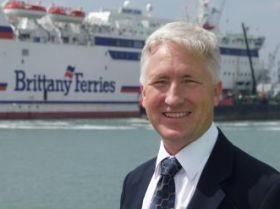
One million pounds has been spent on the latest solar technology at Portsmouth International Port to bring long-term savings and environmental benefits for at least the next 20 years.
Four and a half thousand solar panels have been installed on the roofs of warehouses belonging to MMD, the fruit importer owned by Portsmouth City Council.
Engineers worked throughout November and December to install the high tech panels covering large areas on top of three warehouses. The roofs of newly constructed ‘Shed 13’, and Sheds 6, 9 and 10, have now become ‘solar farms’, with the photovoltaic cells harnessing solar radiation from the sun and turning it into electricity.
The panels were switched on at the end of 2014 and are now fully operational.
Managers at Portsmouth International Port have employed energy-saving measures in all new developments at the port. The terminal building, which opened in 2011, is heated and cooled using thermal energy from the sea and the natural coastal breeze. Low-cost LED lighting is used throughout the new building and surrounding areas.
The investment in solar panels is the latest move to reduce the carbon footprint of Portsmouth International Port, with reducing its impact on the environment a key policy aim. MMD is one of the most energy-intensive parts of the operation, with climate-controlled warehouses a crucial requirement for keeping the fresh produce it handles in optimum condition.
The new solar panels will provide 15 per cent of MMD’s annual energy requirements, creating an average profit to MMD of £112,000 per annum, at current prices. With a lifespan of at least 20 years, the panels will pay for themselves in less than six years, while reducing the requirement to take expensive power from the national grid. This in turn reduces emissions at the generating stage of the power chain.
Martin Putman, port manger at Portsmouth International Port, said, “We’ve researched many options for reducing our carbon footprint and saving money on power at MMD. Now that solar technology is more efficient, and the panels have become cheaper, it is definitely the right time to make this significant investment in our future. We know the south coast has more solar radiation than anywhere else in the UK, so we are guaranteed a good rate of return on our investment.”
'MMD requires seven megawatts of electricity every year, power that is used not only for climate control but also lighting and electrically operated forklift trucks and other vital equipment. The newly-installed solar panels will immediately provide one megawatt of power every year. That’s enough electricity to power 239 average-sized homes.'



